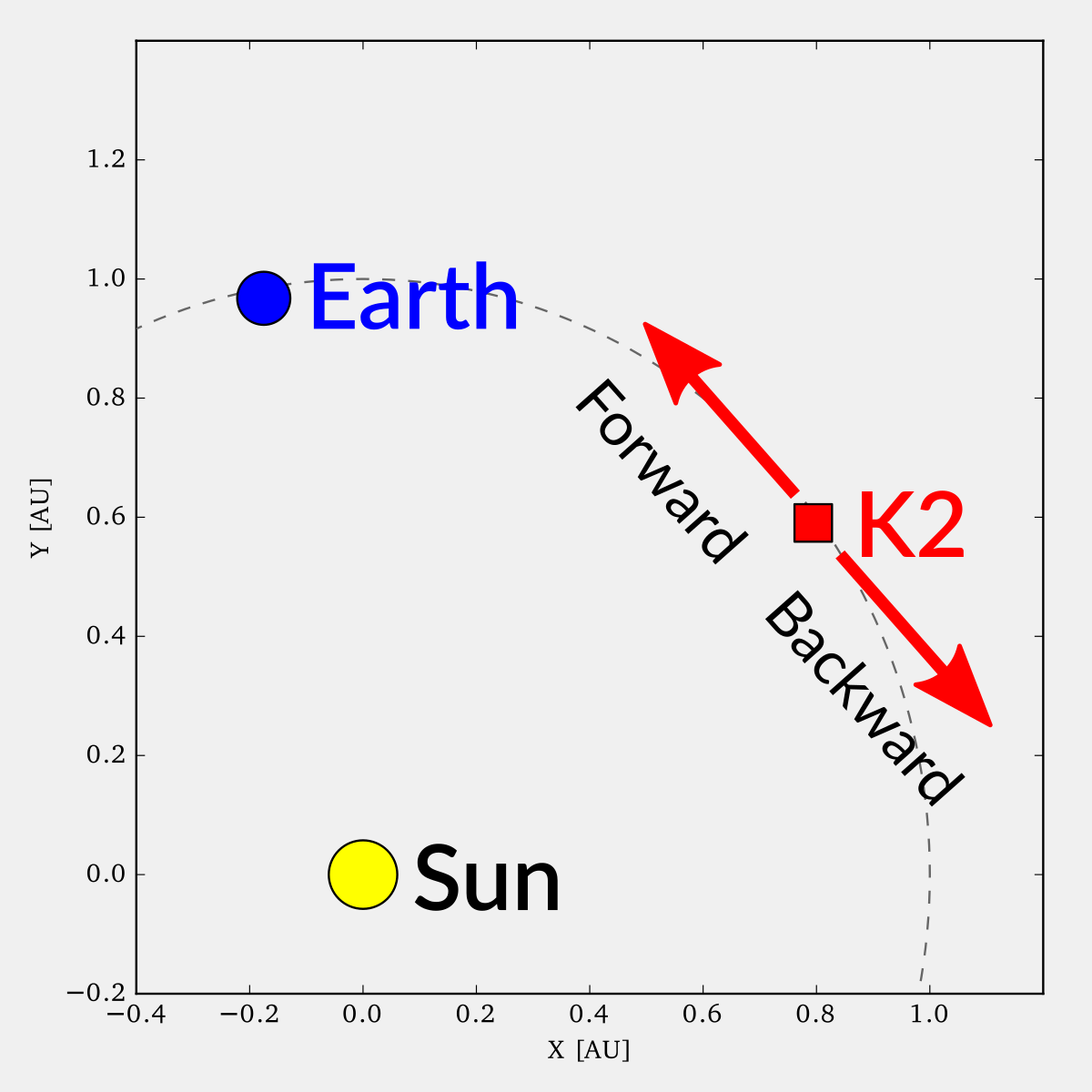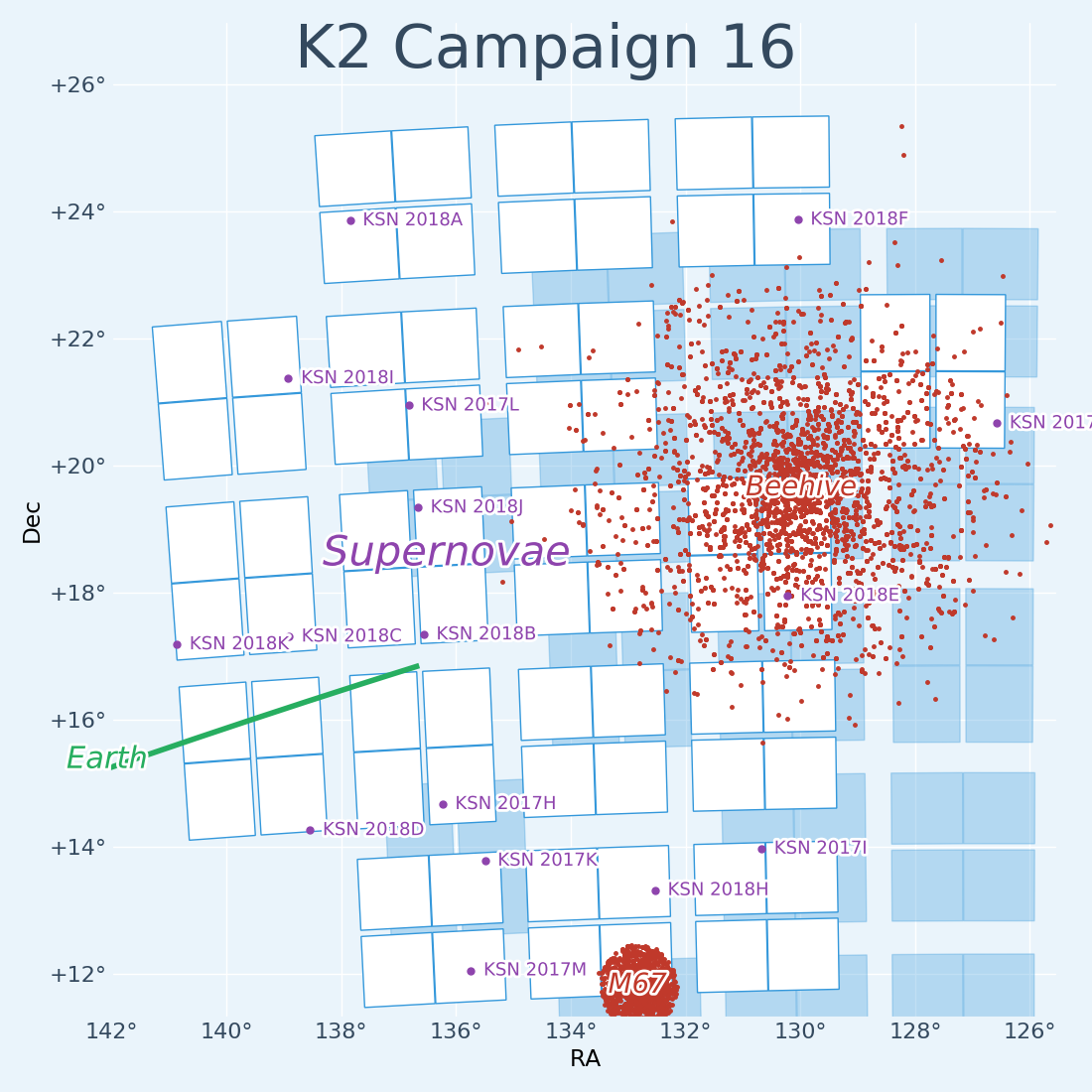The science program and target lists for K2 Campaign 16 have now been posted on the approved targets & programs page.
Campaign 16 is scheduled to run from 2017 Dec 7 (~22h UT) through 2018 Feb 25 (~13h UT). The target list includes 29,888 standard long cadence and 129 standard short cadence targets located towards the constellation of Cancer. The list includes 20,647 stars alongside 9,241 galaxies for the supernova experiment.
Uniquely, the spacecraft will be pointing along the forward-facing direction of the spacecraft's velocity vector during this Campaign, which allows the field to be accessed from Earth. This enables K2's single-bandpass photometry to be complemented with simultaneous observations from the ground, an opportunity that is being utilised by many of the selected programs, e.g. to characterize supernovae in the field, and to carry out simultaneous high-precision RV observations alongside K2's photometry.
The field contains two important clusters: M44 (Beehive) and M67. M44 is one of the most nearby open clusters; its members are being observed using standard masks. M67 is a benchmark cluster with solar-like age and metallicity; the stars in its core are being observed using a 400-by-360 pixel custom mask that covers the same area of the sky that was previously covered by a 400-by-400 pixel custom mask in Campaign 5, except for a 40px-wide strip that is not on silicon in C16. In addition, hundreds of members in the outskirts of M67 are being targeted using standard long cadence masks, and 39 members are targeted using short cadence masks.
Other notable targets in Campaign 16 include:
- Dozens of exoplanets and exoplanet candidates revealed by K2 Campaign 5, including several discovered in the Beehive cluster (K2-101b, K2-102b, K2-103b, K2-104b, EPIC 211901114b) and the confirmed hot Jupiter K2-34b.
- Nearby late-type flare stars including LHS 2090 (M6.5), DP Cnc (M3.5), DS Cnc (M4), and AZ Cnc (M6).
- 9 very bright stars are being observed using custom circular masks, including HD 76333 and 45 Cancri in short cadence, and α, δ, η, and ξ Cancri in long cadence.
- 19 Solar System objects including asteroid Hekate, comets 288P and 2009 YD7, 4 Trojan asteroids, and 12 Trans-Neptunian Objects.
Finally, a consequence of the forward-facing geometry is that our own Earth-Moon system will be moving across the focal plane during the first 3.5 days of the Campaign. We warn that our planet's passage will add noise to multiple CCD channels due to scattered light and saturation effects. Ground-based observers may wish to wait for Earth to leave the focal plane on 2017-Dec-11 near 6h UT to commence their complementary observations. By this time, the mission's engineers will also have been able to confirm the accuracy of Kepler's pointing.
Earth and Moon will be captured by the first Full Frame Image (FFI), which is scheduled for 2017-Dec-10 between 21:38 and 22:08 UT. In addition, a narrow custom LC mask will cover Earth's trajectory between 2017-Dec-07 17:00 and 2017-Dec-08 03:00 UT, which is when Earth will occult the Moon as seen from Kepler. Don't forget to smile and wave towards the constellation of Capricornus near these times, which is where Kepler will be located while it is observing our planet!
The figures below illustrates the location of the field and its notable targets.

